Today, before we started for Winchester, we got a call from Sarah’s Uncle Geoff informing us of a bit of family history. Sarah’s x4 Great Grandfather used to work on the railways in the mid 19th century and his station master’s house is still standing at Langstone near Portsmouth. A quick look at the map showed that our route went very close and so we turned off the A27 to investigate. The old railway has disappeared but is still very obvious on the Ordnance Survey. Geoff had given us an Ordnance Survey reference and so we turned down a very narrow lane to investigate. After instigating a 20 point turn to extricate Basil, we narrowed the options to a couple of properties which looked the right age, but we were not able to determine definitively which was the correct one.

A possible candidate for Sarah’s 4X Great Grandfather’s house

Another possible candidate for Sarah’s 4X Great Grandfather’s house
We continued on to Winchester, where my sources said that there should be a car park where motorhomes can stay overnight. Given our disappointment on a couple of other occasions on this trip, we were not holding our breath, but much to our amazement there is an actual car park, with bays for motorhomes and with a cost of only £7 for 24 hours (51.069539, -1.316634). Hooray for Winchester.

Basil in his Winchester Car Park
Winchester is a very famous and important old English city. Alfred the Great made it the capital of his Saxon kingdom of Wessex. William the Conqueror thought it important enough that he insisted on coronations in both London and Winchester. It remained of import until about the time of the English Civil War.
It is now a small but extremely attractive city with many matters of interest for the visitors. Just wandering around the centre is enjoyable as it is packed full of lovely old buildings. The one tourist attraction to be wary of is the Great Hall which is supposed to contain King Arthur’s round table. In fact it is a 14th century forgery and if you want to see it you can so so from the entrance door without paying for admission to this otherwise fairly uninteresting building.

The Great Hall
The High Street, although full of the usually homogeneous shops, is more attractive than most because the retailers have to fit their businesses into the small old buildings. At the end of the High Street is an impressive statue of King Alfred and then, build over the River Itchen, a mid 18th century mill house has been impressively restored.
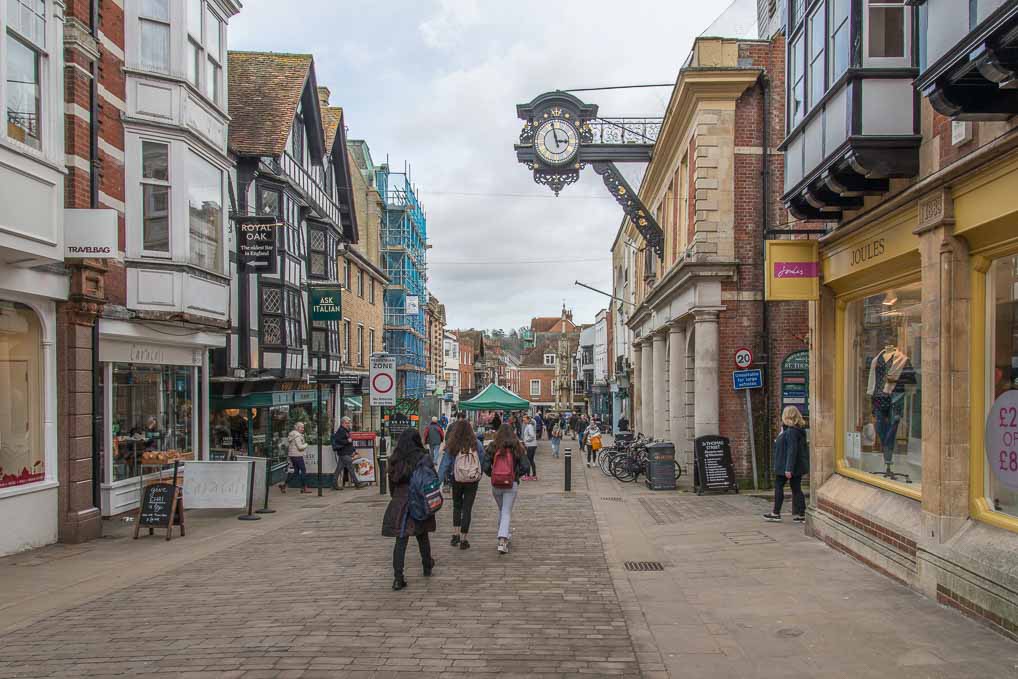
High Street

Alfred the Great
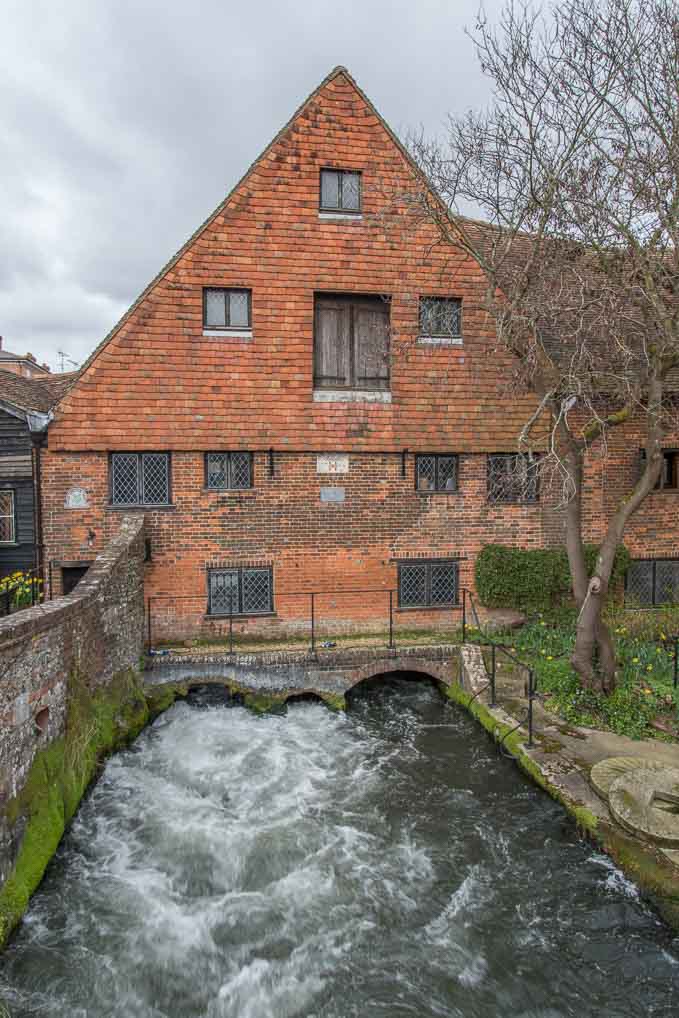
Mill
We left the Cathedral until last, because I wanted time to explore it in detail. From the outside the originally Norman cathedral looks most unimpressive – squat and plain. But inside it is one of England’s most attractive and interesting Cathedrals. The longest nave in Europe; a beautiful early wooden carved choir and much more. It is the resting place of Jane Austen, who’s grave stone gives no indication of her writing and just records her as the daughter of a local clergyman!
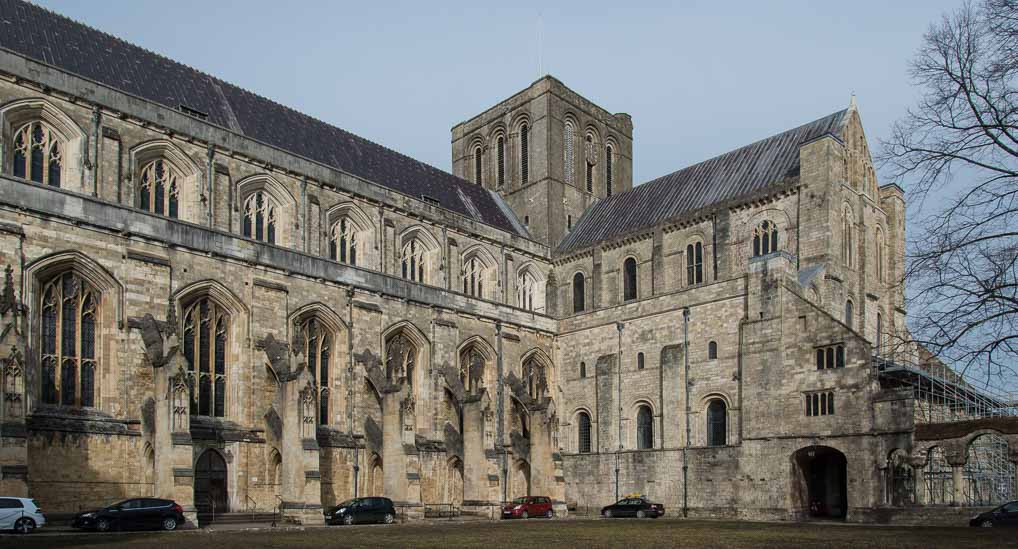
Squat and plain

Jane Austen’s grave stone
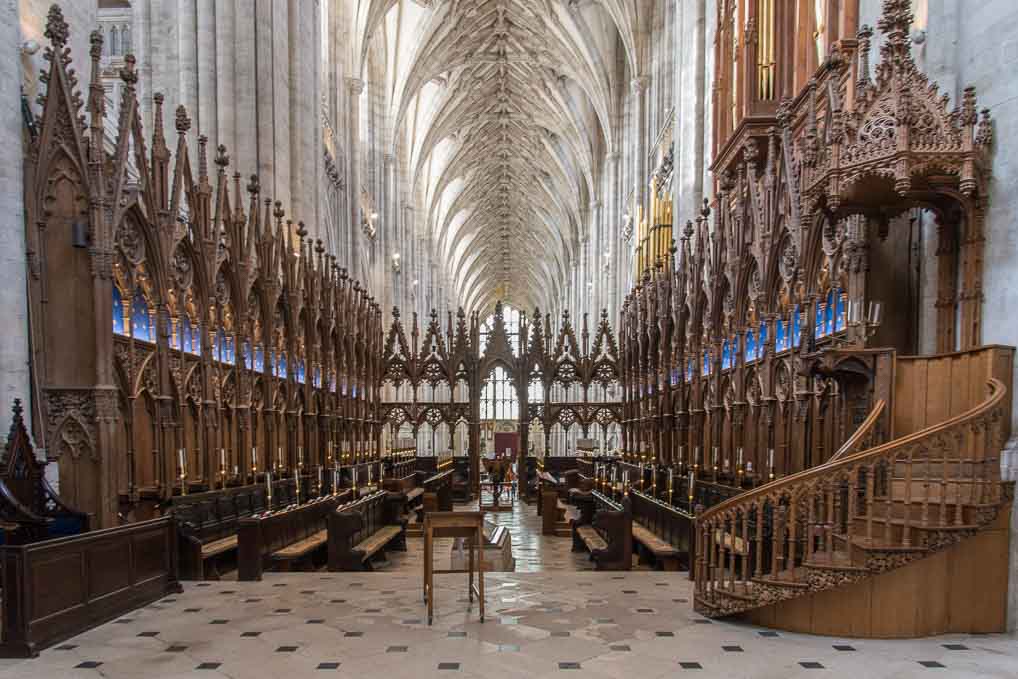
The Choir

Cathedral

Cathedral grounds

Reliquary bost containing perhaps King Canute or William II or neither or both?!
The Cathedral was the burial place of many of the pre-conquest Saxon kings, including Canute and also the second Norman King, William II or William Rufus who died in a hunting “accident” nearby in the New Forest. Unfortunately that well known spoilsport Oliver Cromwell, or rather his troops, dug up all these old Kings and their bones got muddled together. After the Civil War they were re-interred in some reliquary caskets which still contain a pot pourri of monarchs!
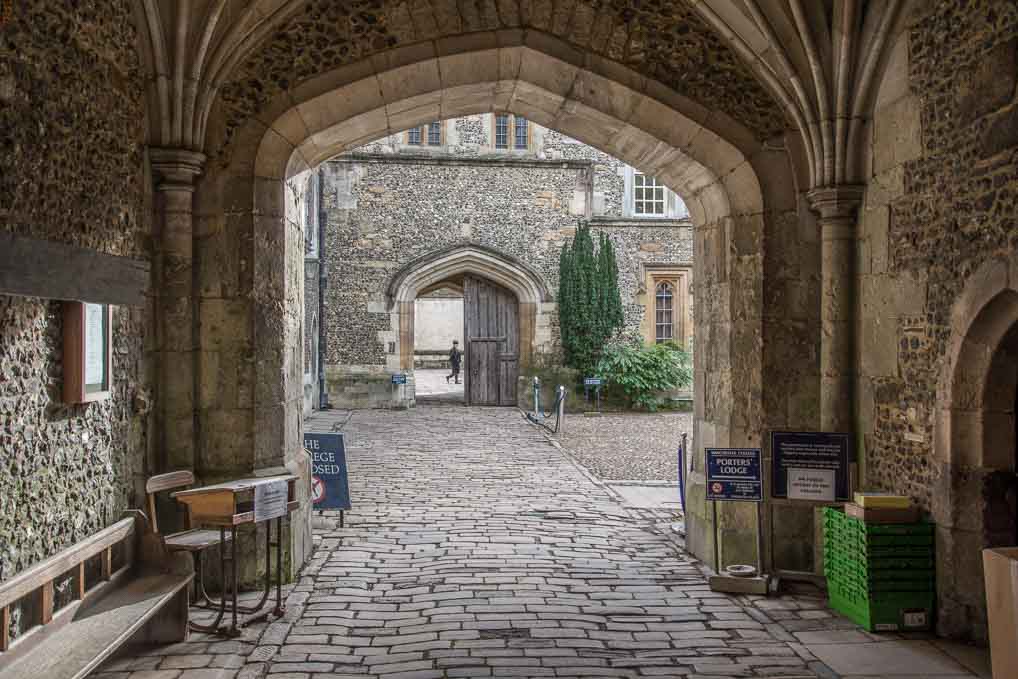
As far as you are allowed to go into Winchester College, one of England’s oldest schools.
Winchester is a fascinating place to explore and well worth going out of you way to visit, in particular if you have a motorhome when you can avail yourself of the town’s generous parking arrangements.
